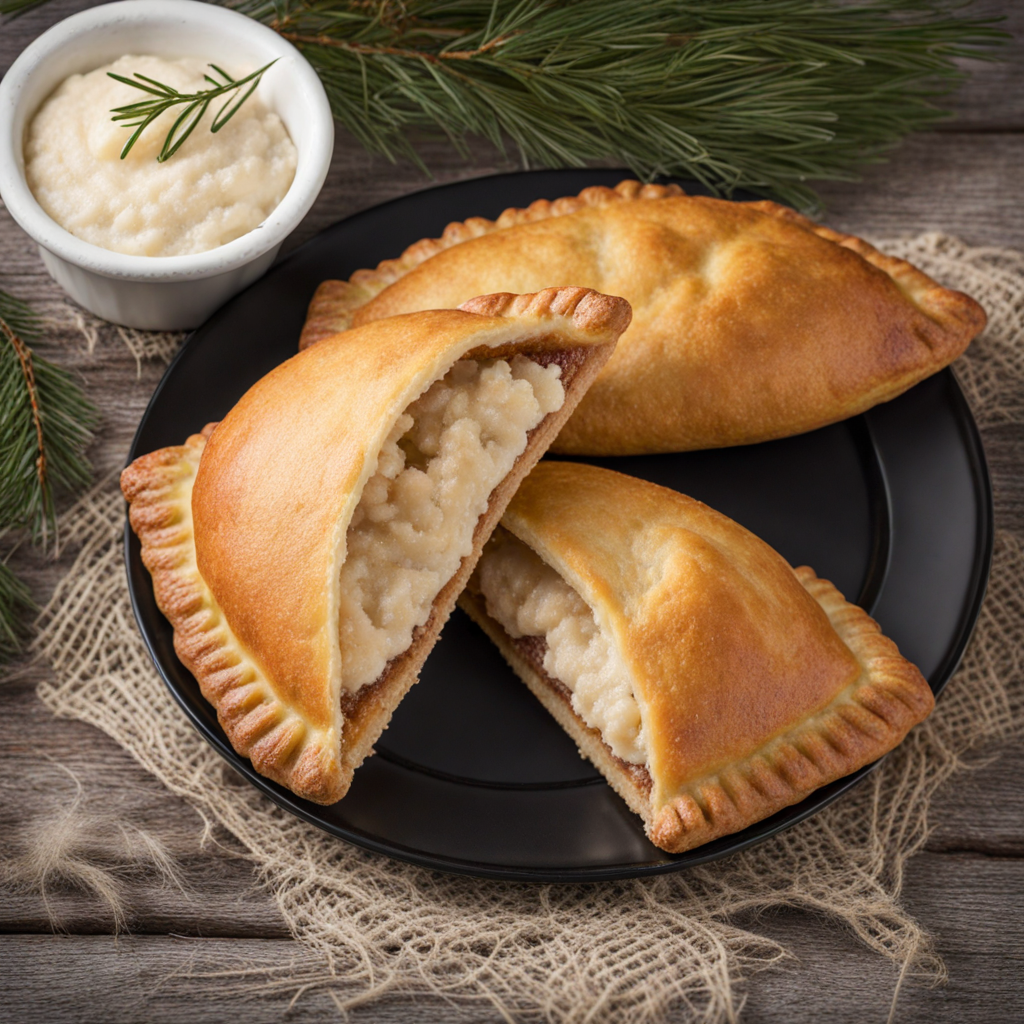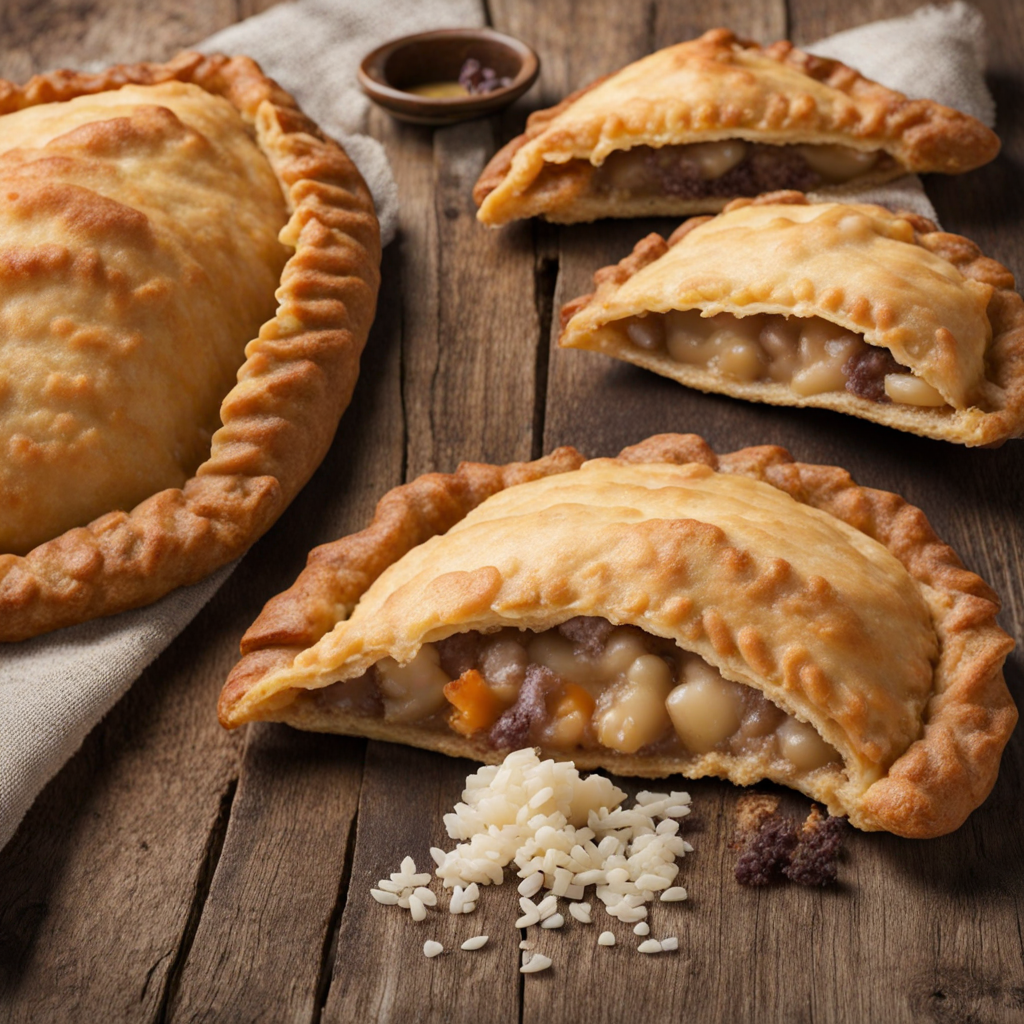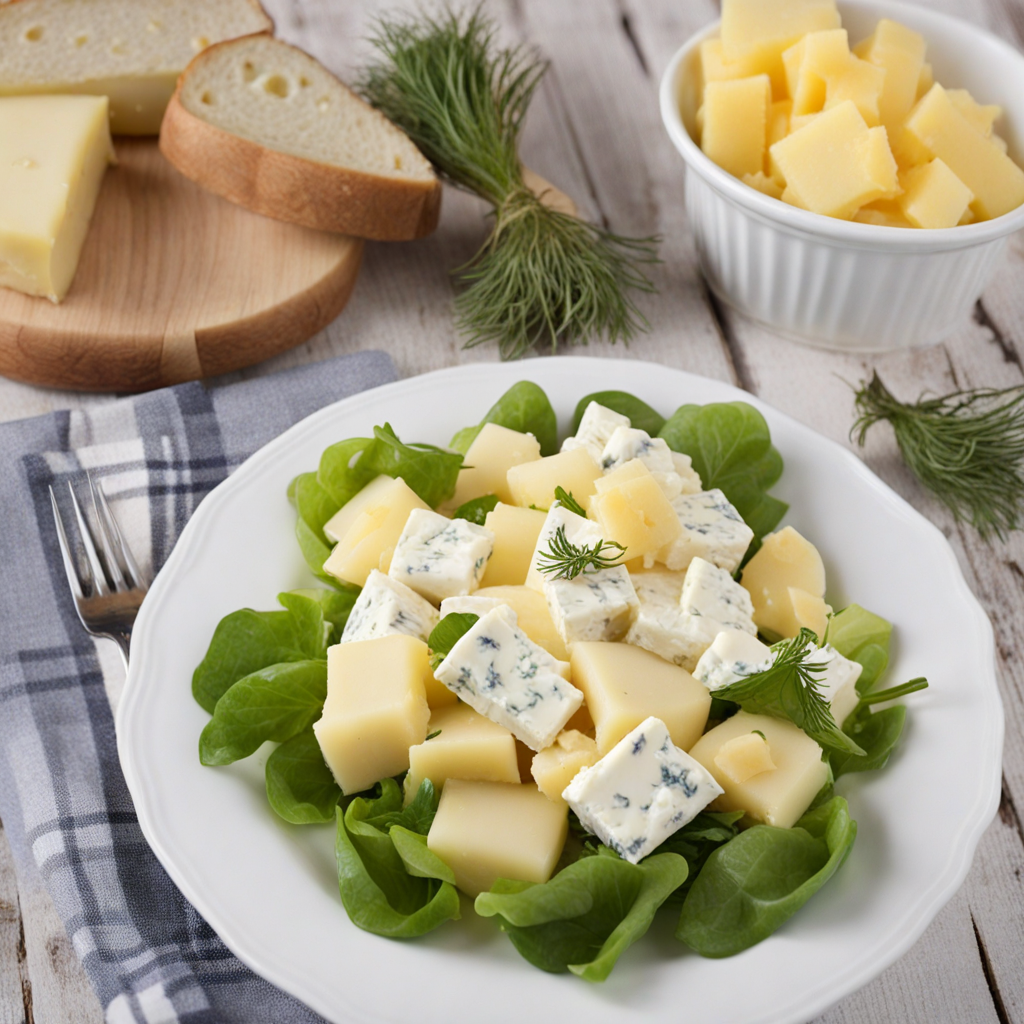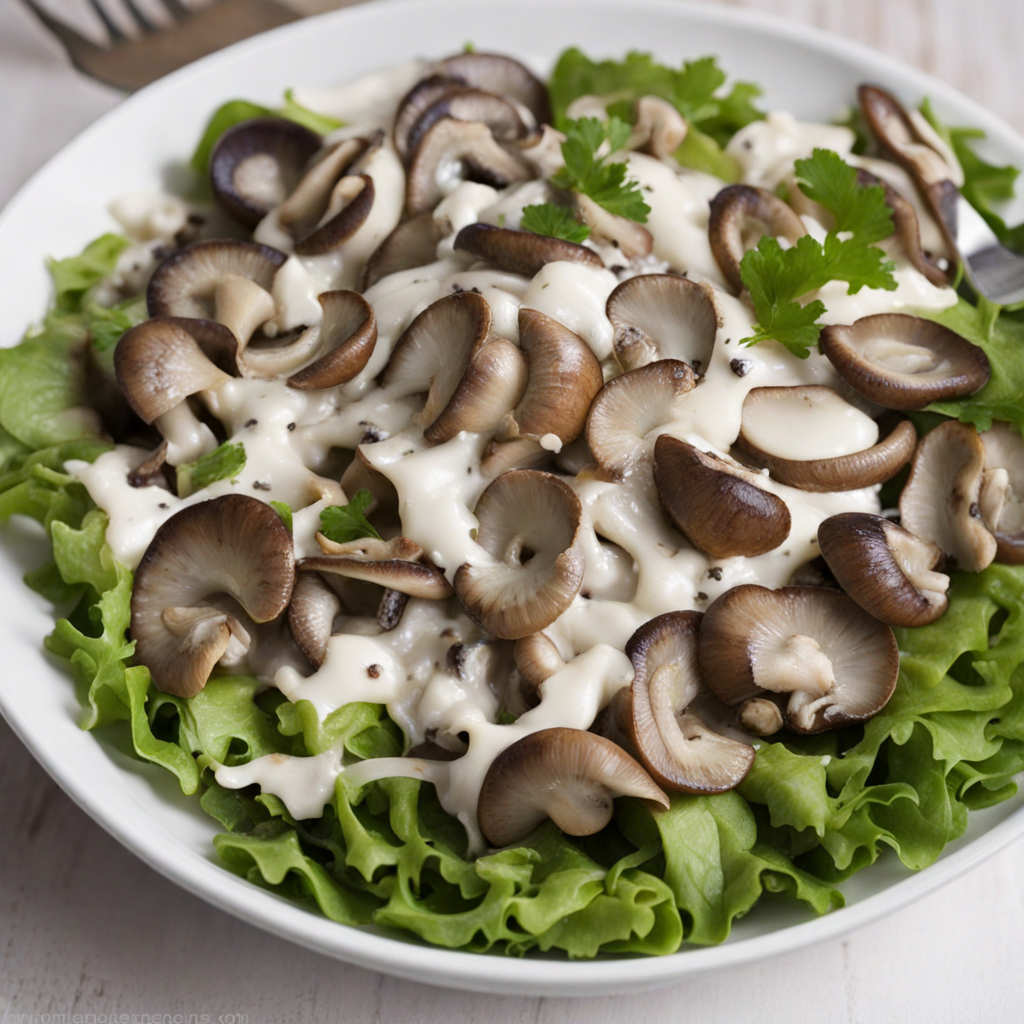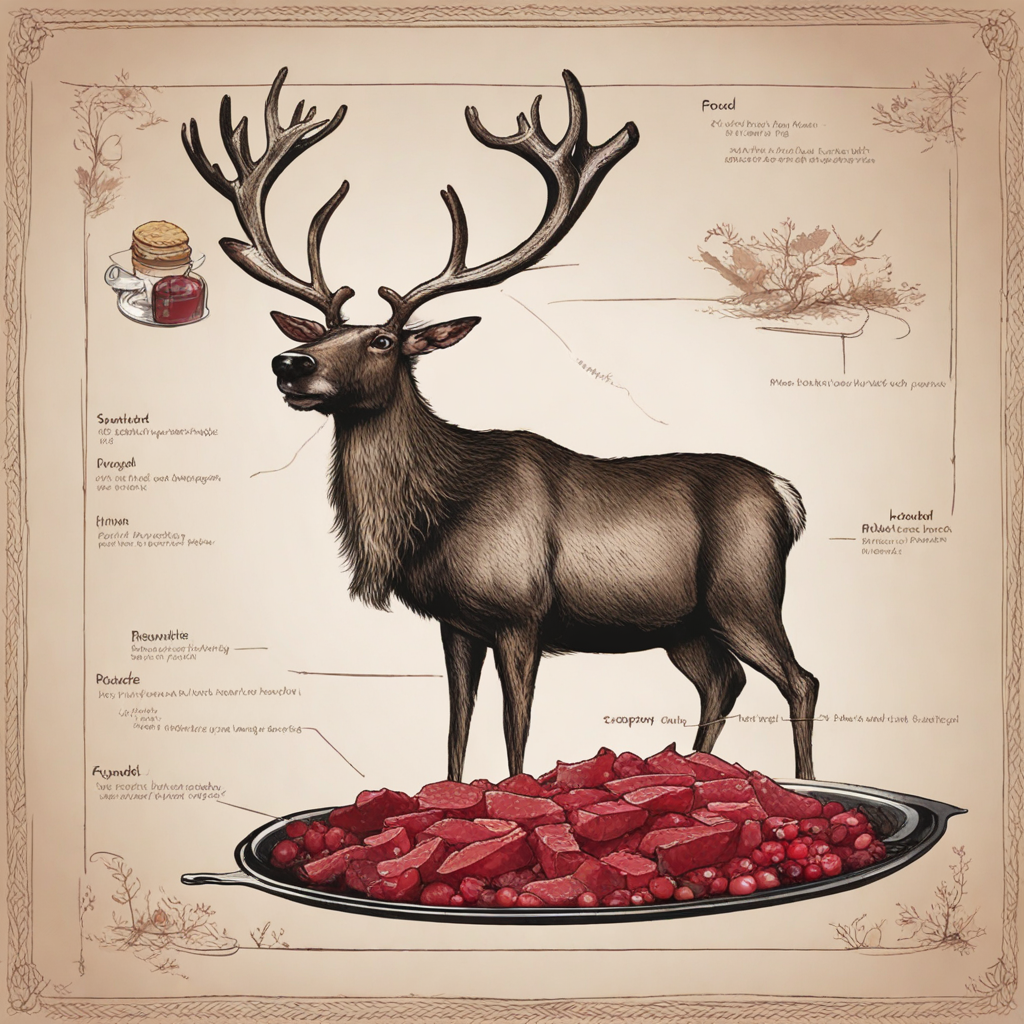Karelian Pasty
Karelian Pasty, or 'Karjalanpiirakka' in Finnish, is a traditional Finnish pastry that showcases the rustic flavors of the Karelian region. These delightful hand-held pastries feature a rye crust that is both hearty and slightly nutty, encasing a variety of fillings. The most common filling consists of rice porridge, often mixed with butter and milk, creating a creamy and comforting center. Some variations might include mashed potatoes or carrot and rice, each offering a unique twist while still staying true to the dish’s humble origins. When you take a bite of a Karelian Pasty, you experience a beautiful contrast between the chewy, coarse texture of the rye crust and the soft, warm filling. The pastry is typically baked until golden brown, giving it a delightful crunch that enhances the overall experience. Traditionally, they are served with a spread of egg butter—a mixture of butter and hard-boiled eggs—which adds a rich, creamy layer that elevates the flavors even further. This combination creates a balance of textures and tastes that is both satisfying and comforting. Enjoying Karelian Pasty is not just about the food itself; it’s also about the experience. Often served as a snack or light meal, these pastries are enjoyed during festive occasions or family gatherings. They can be eaten warm or at room temperature, making them versatile for picnics or as a part of a buffet spread. With their rustic charm and wholesome ingredients, Karelian Pasties invite you to explore the essence of Finnish cuisine and its connection to the land and its traditions.
How It Became This Dish
Karjalanpiirakka: A Journey Through Finnish Culinary Heritage Karjalanpiirakka, or Karelian pasties, is a traditional Finnish dish that beautifully encapsulates the country’s rich cultural history and culinary evolution. Originating from the region of Karelia, which straddles the border between Finland and Russia, this pastry has become a symbol of Finnish identity and heritage. Its simple yet satisfying ingredients and preparation methods reflect the resourcefulness of the people in the face of historical challenges. Origins and Early History The roots of karjalanpiirakka can be traced back to the Karelian region, where it is believed to have been first made by the indigenous Karelian people. This area, characterized by its lakes, forests, and harsh climate, necessitated a diet that was both sustainable and nourishing. The primary ingredients of karjalanpiirakka, which include rye flour for the crust and various fillings, were readily available to the locals. Historically, the pasties were made with a variety of fillings, including rice, barley, and potatoes, depending on the season and what was available. The use of rye flour signifies its importance in Finnish agriculture and diet. Rye was a staple grain in Finland, as it is hardy and can thrive in the country's colder climates. This adaptability to local resources is a testament to the ingenuity of the Karelian people, who created a dish that could be made with minimal ingredients yet still provide sustenance. Cultural Significance Karjalanpiirakka is not just a food item; it is a cultural emblem that represents the Karelian identity and, by extension, Finnish heritage. The pasty is often associated with Karelian traditions, and its preparation has been passed down through generations. In Finland, it is common to enjoy karjalanpiirakka during celebrations and communal gatherings, symbolizing togetherness and shared history. The dish holds particular significance in Finnish nationalism, especially during the 19th and 20th centuries. As Finland sought to define its national identity, traditional foods like karjalanpiirakka became important symbols of Finnish culture. The pasty was embraced not only for its taste but also for its connection to the land and the people. It became a culinary representative of Finland’s struggles and resilience, especially in the context of the Winter War and Continuation War against the Soviet Union, where many Karelian refugees settled in other parts of Finland, bringing their culinary traditions with them. Development Over Time As Finnish society evolved, so too did the karjalanpiirakka. In the early 20th century, the pasty began to gain recognition beyond the Karelian region. With the rise of Finnish nationalism and the emphasis on folk traditions, culinary practices were also celebrated. Karjalanpiirakka was featured in cookbooks and culinary exhibitions, cementing its status as a national dish. The traditional preparation of karjalanpiirakka involves making a thin rye crust that is filled with a mixture of rice porridge or mashed potatoes. The crust is rolled out, filled, and then folded into a characteristic oval shape, often with the edges pinched to give it a distinct look. Once shaped, the pasties are baked until they achieve a golden-brown hue. While traditional fillings remain popular, the modern era has seen a diversification of flavors and techniques. Chefs and home cooks alike have experimented with various fillings, such as carrot and rice, or even innovative adaptations that incorporate ingredients like cheese or mushrooms. This evolution reflects broader culinary trends and the influence of global cuisines on Finnish cooking. Karjalanpiirakka Today Today, karjalanpiirakka is enjoyed by Finns of all ages and is often eaten as a snack or light meal. It is commonly served with a spread of egg butter, made from boiled eggs mixed with butter, which adds a rich and creamy contrast to the hearty pasty. This combination has become a classic pairing, often found at Finnish cafes and restaurants. In recent years, there has been a resurgence of interest in traditional Finnish foods, including karjalanpiirakka, as people seek to connect with their heritage. Many Finns take pride in making the pasties from scratch, and it is common for families to gather to prepare them together, reinforcing the communal aspect of this beloved dish. Various festivals and food events across Finland celebrate karjalanpiirakka, where visitors can taste authentic versions and learn about its history and significance. Moreover, the global interest in Finnish cuisine has brought karjalanpiirakka to international attention. As Finland’s culinary scene gains recognition, the pasty has found its way onto menus in fine dining establishments and casual eateries alike, appealing to both locals and tourists. The dish's simplicity and heartiness resonate with contemporary trends favoring comfort food, making it a suitable candidate for the global palate. Conclusion Karjalanpiirakka is more than just a pastry; it is a testament to the resilience and creativity of the Karelian people and the broader Finnish identity. From its humble beginnings as a staple food for rural communities to its status as a cherished national dish, karjalanpiirakka has evolved while remaining deeply rooted in tradition. As it continues to adapt to modern tastes and sensibilities, it serves as a delicious reminder of Finland’s rich history and cultural heritage. Whether enjoyed at a family gathering, a local café, or an international restaurant, karjalanpiirakka will always hold a special place in the hearts of those who savor its unique flavors and the stories it carries.
You may like
Discover local flavors from Finland


